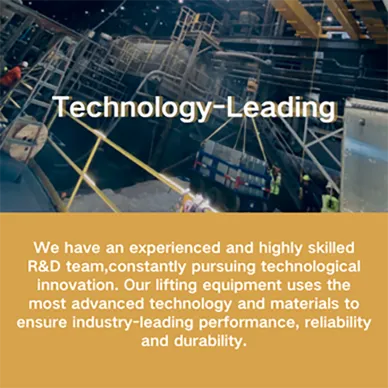movable gantry
Exploring the Movable Gantry A Revolution in Construction and Manufacturing
In recent years, the construction and manufacturing industries have witnessed significant advancements in technology aimed at improving efficiency, safety, and precision. Among these innovations is the movable gantry, a mechanical structure designed to enhance various operational processes. This article delves into the structure, applications, advantages, and future potential of movable gantry systems.
What is a Movable Gantry?
A movable gantry comprises a framework, typically formed from steel or aluminum, with two vertical supports connected by horizontal beams. This system is often equipped with wheels or tracks, allowing it to move along a designated path. The gantry can support a range of tools and equipment, such as cranes, hoists, and other lifting devices, making it an integral part of many industrial applications. The ability to move provides flexibility, enabling operations to adapt to different sites and projects.
Applications of Movable Gantries
Movable gantries find applications across various sectors, including construction, manufacturing, and shipping. In construction, they are often used for lifting heavy materials and prefabricated components into position. Their mobility allows construction sites to maximize space and efficiently move materials where they are needed most.
In manufacturing, movable gantries facilitate the assembly and manipulation of large components, like those found in automotive or aerospace industries. These systems can efficiently move parts from one station to another, streamlining production lines and improving cycle times. Additionally, in shipping yards, they are crucial for loading and unloading containers, helping to optimize the flow of goods and reduce turnaround times.
Advantages of Movable Gantries
The adoption of movable gantry systems offers numerous advantages. One of the primary benefits is enhanced flexibility. Unlike fixed cranes, movable gantries can be reconfigured to accommodate different tasks and layouts, which is particularly valuable in dynamic work environments.
movable gantry

Another advantage is improved safety. The design of movable gantries often includes features that minimize hazards during lifting operations, such as stability systems and advanced control mechanisms. These safety features can significantly reduce the risk of accidents, protecting workers and lowering liability for businesses.
Furthermore, movable gantries increase operational efficiency. By allowing quick repositioning and reducing the need for multiple tools or machines, they streamline workflows. This increased efficiency can lead to significant cost savings in labor, time, and materials.
Challenges and Considerations
While movable gantries offer many advantages, they are not without challenges. One significant consideration is the initial investment. The cost of purchasing and installing these systems may be high, particularly for smaller companies. However, the return on investment can be very favorable, especially if the gantry is used for multiple projects.
Additionally, proper training and maintenance are crucial. Operators must be trained to use movable gantries safely and effectively, and regular maintenance is required to ensure the longevity and reliability of the equipment.
The Future of Movable Gantries
Looking ahead, the future of movable gantries is bright. As industries continue to prioritize automation and efficiency, the demand for advanced lifting and handling solutions will grow. Innovation in materials science, robotics, and artificial intelligence could further enhance the capabilities of movable gantries, making them even more efficient and versatile.
In conclusion, movable gantry systems are transforming the way construction and manufacturing operate. Their flexibility, safety features, and efficiency boost make them an invaluable asset across various industries. As technology continues to advance, the potential for even greater applications and improvements in movable gantry systems is immense, promising a future where they play a critical role in enhancing productivity and safety in challenging work environments.
-
Unlock Seamless Relocation with Our Heavy Equipment Moving ExpertiseNewsJun.06,2025
-
Unleash Unrivaled Flexibility with Our Adjustable Gantry CraneNewsJun.06,2025
-
Unleash Heavy-Duty Efficiency with Our Industrial Gantry Crane SolutionsNewsJun.06,2025
-
Revolutionize Steel Handling with Our Magnetic Lifter RangeNewsJun.06,2025
-
Master Equipment Mobility with Premium Machinery Mover SolutionsNewsJun.06,2025
-
Elevate Your Material Handling with Magnetic Lifter TechnologyNewsJun.06,2025
-
YS Permanent Lifting Magnets: The Smarter Way to Handle SteelNewsMay.22,2025
